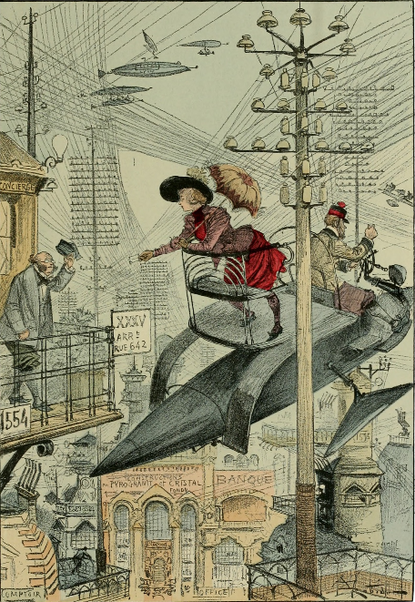SZIGET 2012: Young, Beautiful and Dutch
In 1993, twenty three years old Karoly Gerendai received from his parents amount of money that today would have been the equivalent of 1,800 Euros. The money was given by his parents in order to buy a house for him and his pregnant wife. Instead, Karoly, who was already well-known in the Hungarian music scene as an organizer and promoter of concerts, invested the whole amount in the creation of Sziget Event Organizer Firm. Thus began the history of the Sziget festival, which this year celebrates its twentieth anniversary, and due to the last year’s results is the winner of European Festival Awards as the Best European Major Festival.
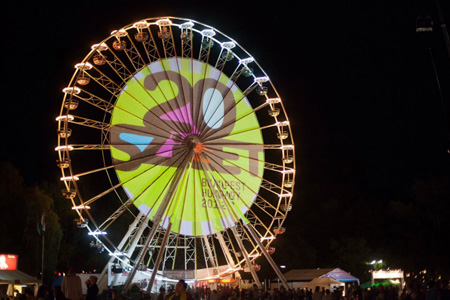
Bence Szemerey for Sziget Festival Official
On my way to Budapest I’ve met several independent travelers, each of them has been to Sziget couple of times. When I started to inquire about how their special magic relationship with the festival have emerged, one of them - Richard - said that he has been attending the event for several years until 2007, after which, according to him, Sziget has become too commercial. It got me thinking, because my Sziget-story have just started in 2007, when the festival has already stepped from "underground" to "mainstream." But despite his newfound “commercialness” and “mainstreamness”, Sziget has managed to change my life and, according to the amount of familiar faces I meet on the island each year, the lives of hundreds of other young people. Last year, I thought that one day I will say "Sziget is not the same" and this year it was clear that this point does not depend on the festival - it's individual history of each of its visitors. For all fans of wonderful Óbuda island who come to Budapest every year, there is a certain period of residence in the Sziget history, and the time to move on which follow afterwards.
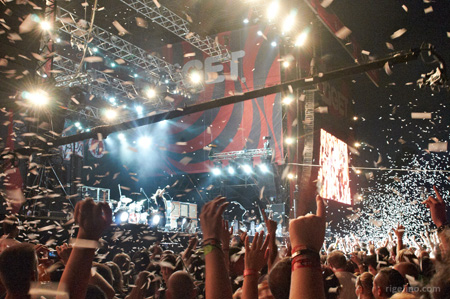
This year from the very first moment of staying on the island my eyes caught a lot of changes: some of which have been planned by the organizers, and some of which happened quite suddenly and strangely surprised avid Sziget veterans.
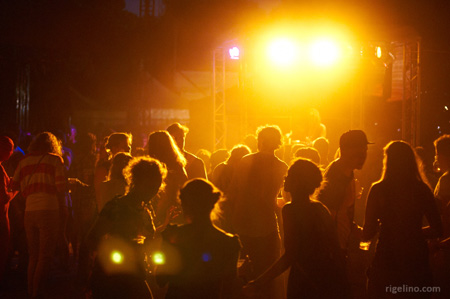
Sziget team decided to re-organize the space of the festival, due to which a number of small venues were abolished, some mounted on a much larger scale and moved to new locations in order to accommodate all potential visitors. On the one hand it is understandable from the safety point of view and the need to optimize people’s traffic on the island. Sziget has been always considered the best European festival in terms of highest organization quality and it makes its best to keep the brand, providing its users with all the necessary things and even beyond that. On the other hand it was impossible to avoid the thought that you are in the heart of the global consumption machine where everything calls for automatic non-stop saturation. While pursuing quality and perfection, Sziget has lost its sincerity, for which many rushed to the island. For example, some places, where tired and happy islanders gathered and sang songs, hugging each other until dawn, become a sterile bars offering a wide range of alcohol, a convenient payment system and fast service. Sometimes It was hard to avoid a thought that Sziget became more like an amusement park with all the bungee jumping, a Ferris wheel and lots of other ways to entertain yourself. But, of course, it could not be the other way, because we are talking about hundreds of thousands of visitors from around the world, each of which needs to be pleased.
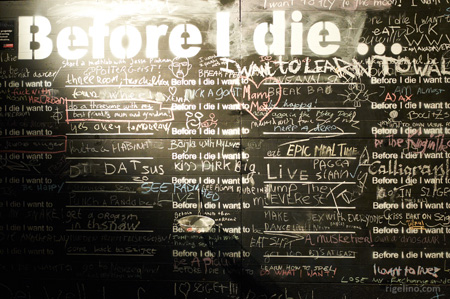
Such a change in the organization approach has began in 2009, when the island was visited by a record number of visitors - 390 000. Now, twenty years after the first Sziget in 1993, it seems that the festival was simply doomed to such a wide international success. There are a few things that have played a key role in promoting the festival: the low price, good location and timing. For quite a little money as for the EU-citizen Sziget offers a week of active rest in one of the most beautiful cities in Europe. So many avid festival-goers really don’t care about the festival program: island life itself, regardless of the lineup, is a celebration of life, surrounded by thousands of free and beautiful people. Moreover, none of the European festivals (average duration 3-4 days) does not offer such a broad musical and cultural scene. In addition to a variety of music styles on the island there are also theater, cinema, circus, art and all kinds of activities within the cultural context. For the foreign visitor Sziget is an opportunity to attend concerts of favorite bands and in parallel to learn more about the diversity of Hungarian culture, which is very different from that of Western European countries.

Ironically, the wide international popularity of Sziget induced non-acceptance from the Hungarian people. According to the latest statistics, 85% of the festival visitors are foreigners, mainly from the Netherlands, France, Germany, Italy and Belgium. In the last few years the Netherlands actually occupied the island. For the Sziget founders the Hungarian question is an issue of highest importance, so they try to take into account the interests of the national audience and strongly promote the national culture. This was particularly noticeable this year. Three years ago Hungarian Village became an integral part of the annual program. At this Village guests can see, learn and discover cultural traits of Hungary, to take part in master classes on ethnic dances and singing, to dress in traditional Hungarian costumes, to play traditional games and, of course, taste the stew, kurtos-caprice and Palinka - the legendary local vodka.
Besides, there were many additional sites and activities, designed in order to reveal the heritage of Hungary. These sites have been previously presented at Sziget as well, but this time they were placed the way it was almost impossible not to visit them. In particular, Central East European FunFair - the site where in a very ironic and entertaining way people could learn and experience the country's socialist past. The main purpose of the site - to create an atmosphere of total control which prevailed during the time of Hungarian People's Republic. The Fair became one of the most popular places of Sziget 2012. In order to get on its territory, it was necessary to get the symbolic passport and money, to cross the border, to go through the hands of angry policemen and customs officials and to answer the questions about national identity, purpose of visit, and such. After the border crossing, the viewer enters the village with some infrastructure. One can go to the cinema, buy clothes, play games - but for all this there was a constant need of getting permission, reporting to the police, paying bribes. Karzat Theatre actors brilliantly realized the project’s idea and earned rave reviews from each of the fair participants. Most interesting is that Western visitors are most impressed with the game of corruption and bureaucracy. Eastern European visitors noted that the fair reminds them of their home-countries.
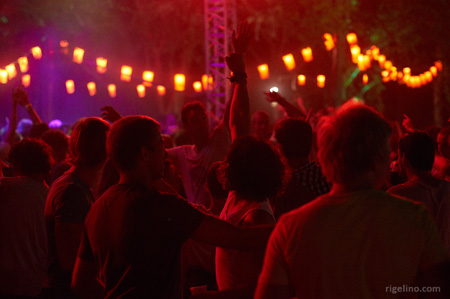
Twenty years is quite a serious lap for the Eastern Festival. The festival which began as an informal student party with the aim to be opposite the system. Responsibility imposed on the shoulders of the organizers of the festival is worthy of great respect. From year to year the team of fifty do its best to develop the festival, was informative and interesting to a wide audience, tolerant of different cultural manifestations and self-expression of individuals.Today Sziget became the undisputed symbol of Hungarian as Lake Balaton, red pepper and a Rubik's Cube. Sounds strange, but it is obvious to everybody, except the Government, which in recent years put a spoke in the wheel. In particular, last year the festival has become unprofitable, as the leadership of the city requested extremely high (170,000 euros) fee for the lease of the island. Despite the fact that each year Sziget creates eight thousand jobs and during the festival week Budapest has the maximum number of tourists. In addition, Sziget now is a cultural cluster: through the participation of various cultural institutions Budapest creates a certain touristic route, which focuses on cultural education and recreation. Since last year the city-pass is available for all the Sziget-visitors: additional festival bracelet which includes all public transport, museums, the zoo and the thermal baths, which Budapest is famous for. It is hard to overestimate the contribution of the festival into the cultural and economic development of Hungary.
When I visited Sziget for the first time five years ago, I saw a completely different mode of living. In the blending of cultures, nations, sounds, rhythms and moods I could see the basic idea - a celebration of life, which largely depends on you. After all, life does not consist of a two-week vacation or a trip to the festival. I saw a lot of people who are able to create a holiday everywhere, aspire to the good life and implement their own ideas. After all, in fact, the visa regime is not as bad as it seems, and Budapest is not so far - most important thing is to motivate yourself to make your life more colorful. Because all the great things have their start from ideas, dreams and motivations. Once upon a time, several young people have had the desire to build a world of its own, which has more freedom, music and creativity. So there was Sziget, which today inspires thousands of other young people to create their own worlds and stories. Sziget, which gives the best experiences and emotions. Sziget, which becomes an unforgettable part of your life, youth and beauty.
Photos: Karsten Lücke



